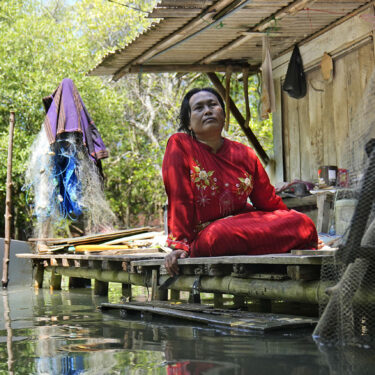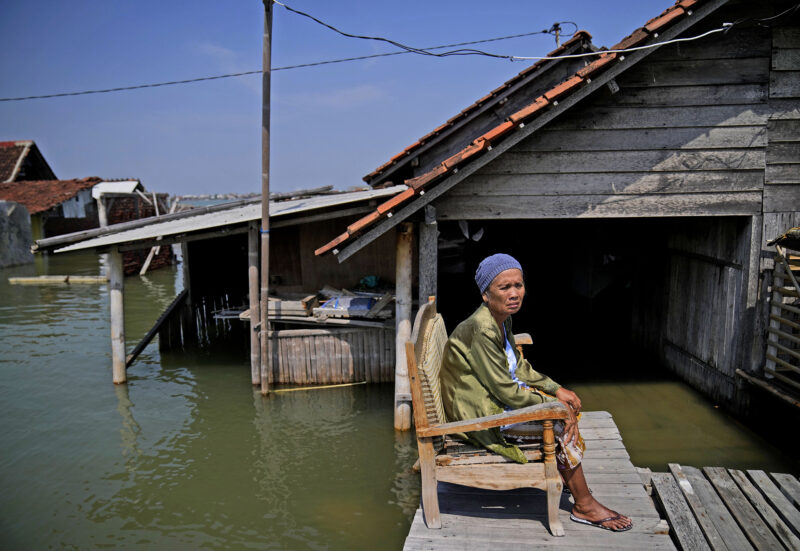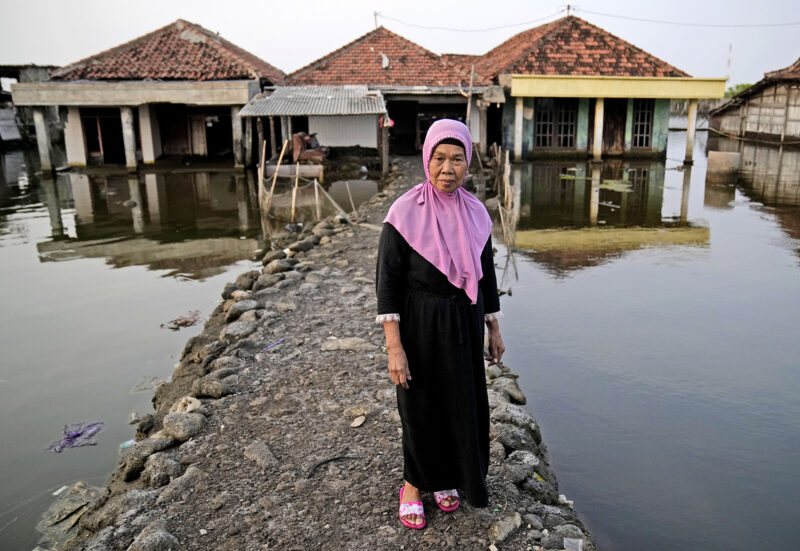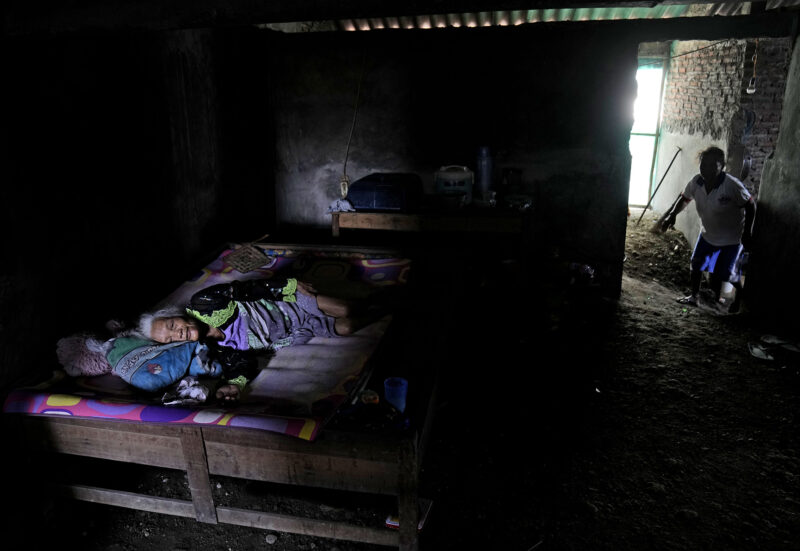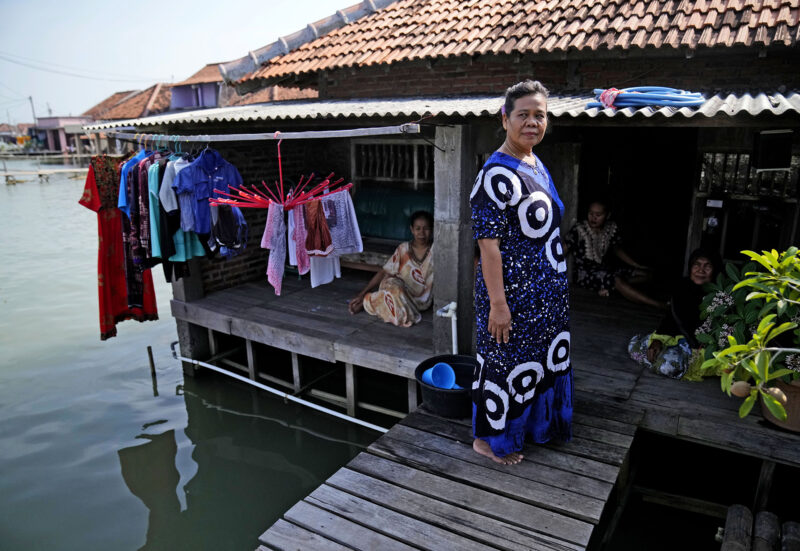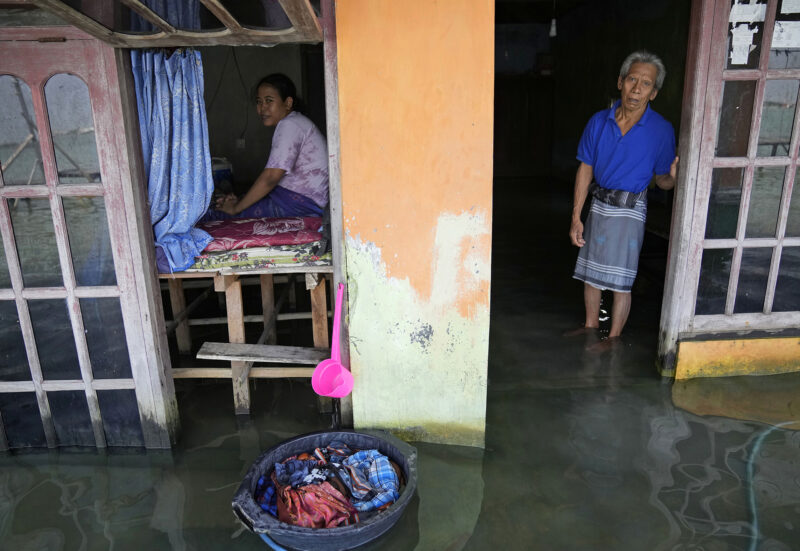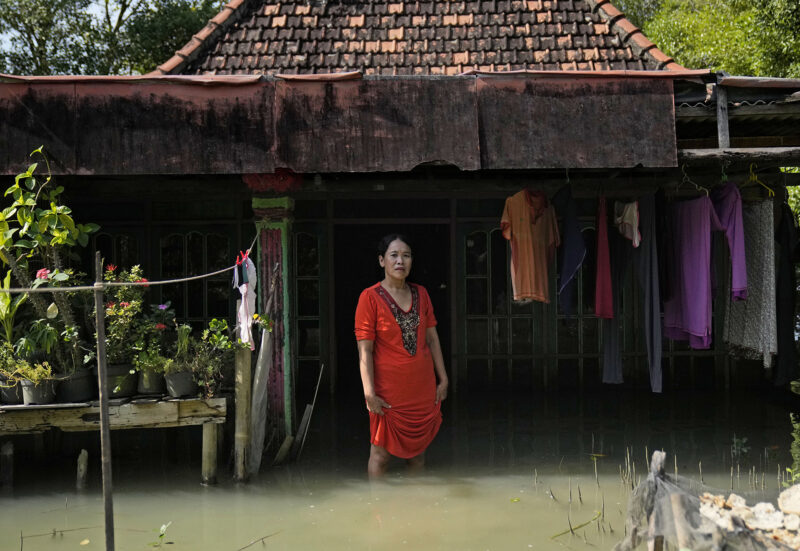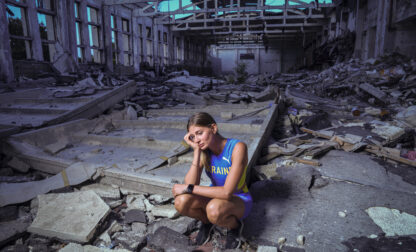Erosion resulting in loss of land mass is one of the biggest impacts of global climate change, forcing countless people to leave their homes. With that in mind, Indonesia chief photographer Dita Alangkara and Jakarta-based reporter Victoria Milko set out to capture what happens to people for whom relocation is not an option, who have nowhere else to go as their homes are repeatedly flooded or engulfed by the ocean.
The idea for the story emerged last year when Alangkara heard rumors of villages that were permanently inundated by ocean water, the residents sometimes trapped in their flooded homes by the rising tides. Alangkara visited villages on the northern coast of Central Java, an eight-hour drive from Jakarta, to see for himself. The trip resulted in a small photo package, but he knew there was much more.
Then, this summer, AP’s Climate and Environment team launched a series on climate-driven migration. Alangkara and climate photo editor Alyssa Goodman began brainstorming how best to document people who were forced to live in flooded homes. They landed on the idea of environmental portraits, posed images of people at home despite the ever-present water.
Alangkara and Milko rode a train, then motorbikes and finally a boat to the villages, where they waded through fetid, waist-deep water — avoiding floating dead fish and slithering water snakes — while taking note of the tidal schedule to safely come, go and meet with people living in the villages. Besides those physical challenges, the pair also had to convince residents to let journalists into their lives, to share their stories and allow themselves to be photographed in difficult circumstances. Although it had been less than a year since Alangkara’s first visit, he could already see a massive decline in living conditions for the villagers.
Spend some time with this beautiful and sad package by @DitaAlangkara + @thevmilko. These people in Java have no choice but to live amid flood. https://t.co/dc2ifOb6gC
— Peter Prengaman (@peterprengaman) September 1, 2022
The pair interviewed and photographed 10 families, giving a full sense of how people are coping with water in their homes — at least until their homes are completely washed away. The images and text are disturbing — 18-year-old Dwi Ulfani stands in her living room in several inches of water while a television and other devices are plugged into outlets — but they also convey the dignity and resilience of people adapting as best they can to extreme conditions.
The story was used widely,from the Seattle Times to the Taiwan Times and beyond,and is starting to have an impact: The weekend after it moved,the piece was shared by Southeast Asian environmental and human rights networks. Human Rights Watch’s Indonesia researcher has reached out to Milko to get more information on the villages and people in them.
For intrepid coverage that brings to light the grim effects of climate change on the most vulnerable, Alangkara and Milko earn AP’s Best of the Week — Second Winner honors.

The pair interviewed and photographed 10 families, giving a full sense of how people are coping with water in their homes — at least until their homes are completely washed away. The images and text are disturbing — 18-year-old Dwi Ulfani stands in her living room in several inches of water while a television and other devices are plugged into outlets — but they also convey the dignity and resilience of people adapting as best they can to extreme conditions.
The story was used widely,from the Seattle Times to the Taiwan Times and beyond,and is starting to have an impact: The weekend after it moved,the piece was shared by Southeast Asian environmental and human rights networks. Human Rights Watch’s Indonesia researcher has reached out to Milko to get more information on the villages and people in them.
For intrepid coverage that brings to light the grim effects of climate change on the most vulnerable, Alangkara and Milko earn AP’s Best of the Week — Second Winner honors.
Visit AP.org to request a trial subscription to AP’s video,photo and text services.
For breaking news, visit apnews.com.

